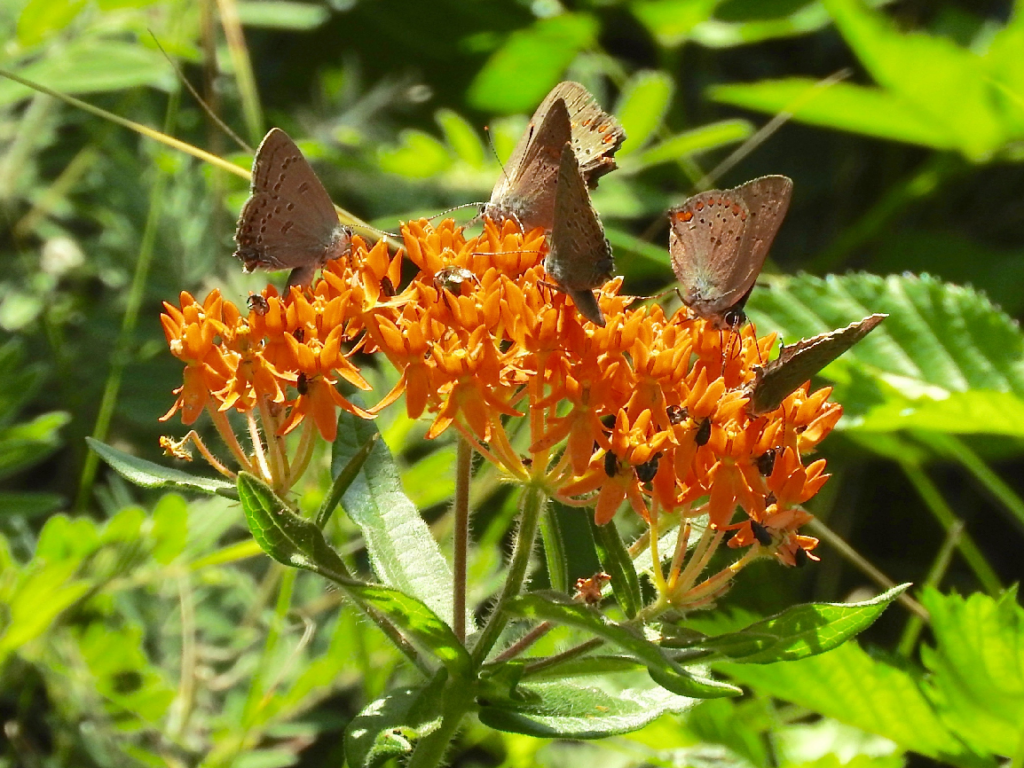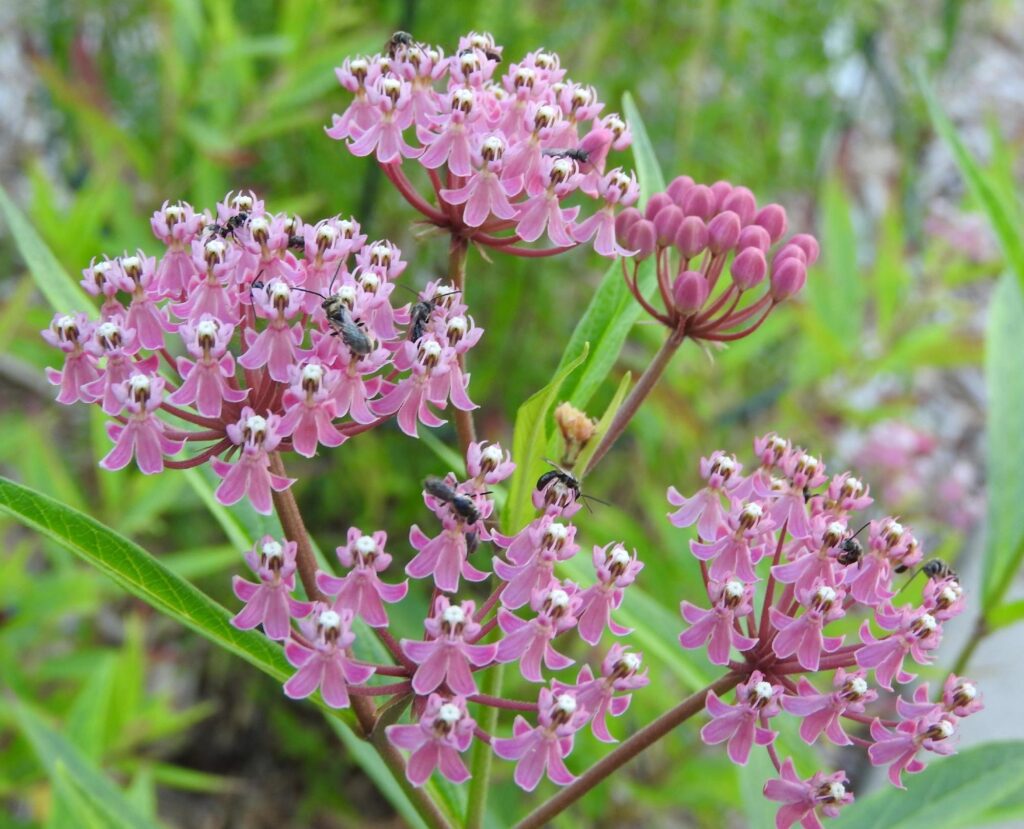by Ilse Gebhard, KAWO member
Here is an interesting research paper that shows the importance to monarchs and bees of gardens with milkweed in urban settings. If you would like to read the entire paper, please contact me at: [email protected].
Adam M. Baker · Daniel A. Potter Published online: 6 June 2018 ©Springer International Publishing AG, part of Springer Nature 2018
Abstract
Planting milkweeds on public and private lands has emerged as a central conservation strategy for restoring declining North American migratory populations of the monarch butterfly (Danaus plexippus). Nearly all actionable science on this issue has focused on restoring common milkweed (Asclepias syriaca L.) in rural land types. The aim of this study was to develop recommendations for the best milkweeds for managed gardens intended to support both monarch butterflies and bees. Eight milkweed (Asclepias) species varying in height, form, and leaf shape were grown in a common-garden experiment at a public arboretum. We measured milkweed growth, tillering, and bloom periods, conducted bi-weekly counts of eggs and larvae to assess colonization by wild monarchs, and evaluated suitability for growth of monarch larvae. We also quantified bee visitation and compared the bee assemblages associated with six of the eight species, augmented with additional collections from other sites. Monarchs rapidly colonized the gardens, but did not equally use all of the milkweed species. More eggs and larvae were found on taller, broad-leaved milkweeds, but there was relatively little difference in larval performance, suggesting ovipositional preference for more apparent plants. Asclepias tuberosa and A. fascicularis attracted the greatest number of bees, whereas bee genus diversity was greatest on A. verticillata, A. fascicularis, and A. tuberosa. Milkweeds that do not spread extensively by tillering may be best suited for managed gardens. Combining milkweeds that are preferred by ovipositing monarchs with ones that are particularly attractive to bees may enhance conservation value of small urban gardens.


Photo: Russ Schipper

Photo: Ilse Gebhard

